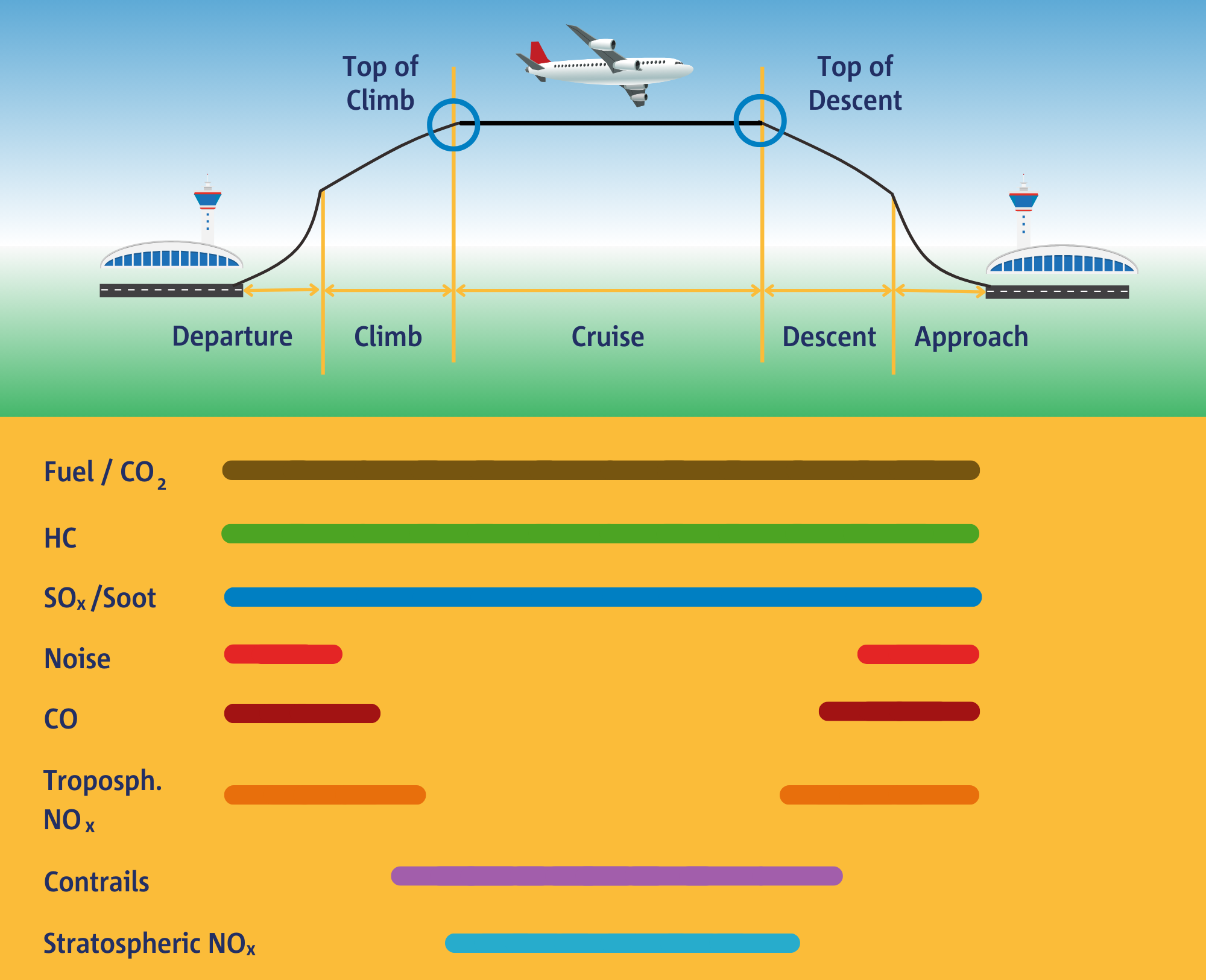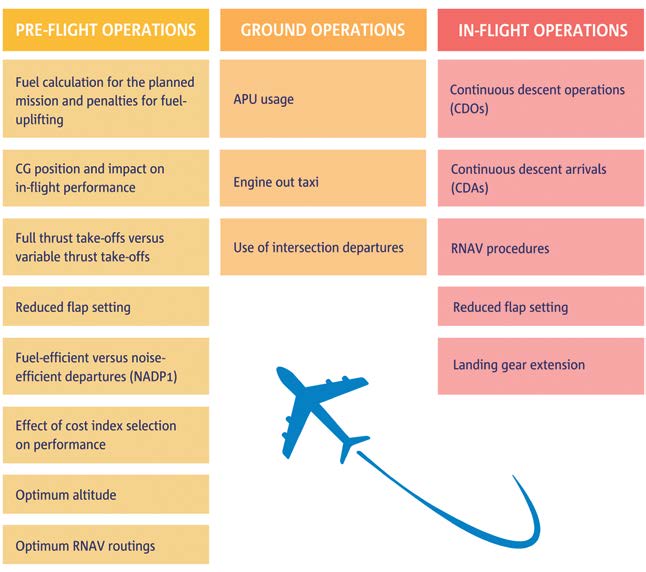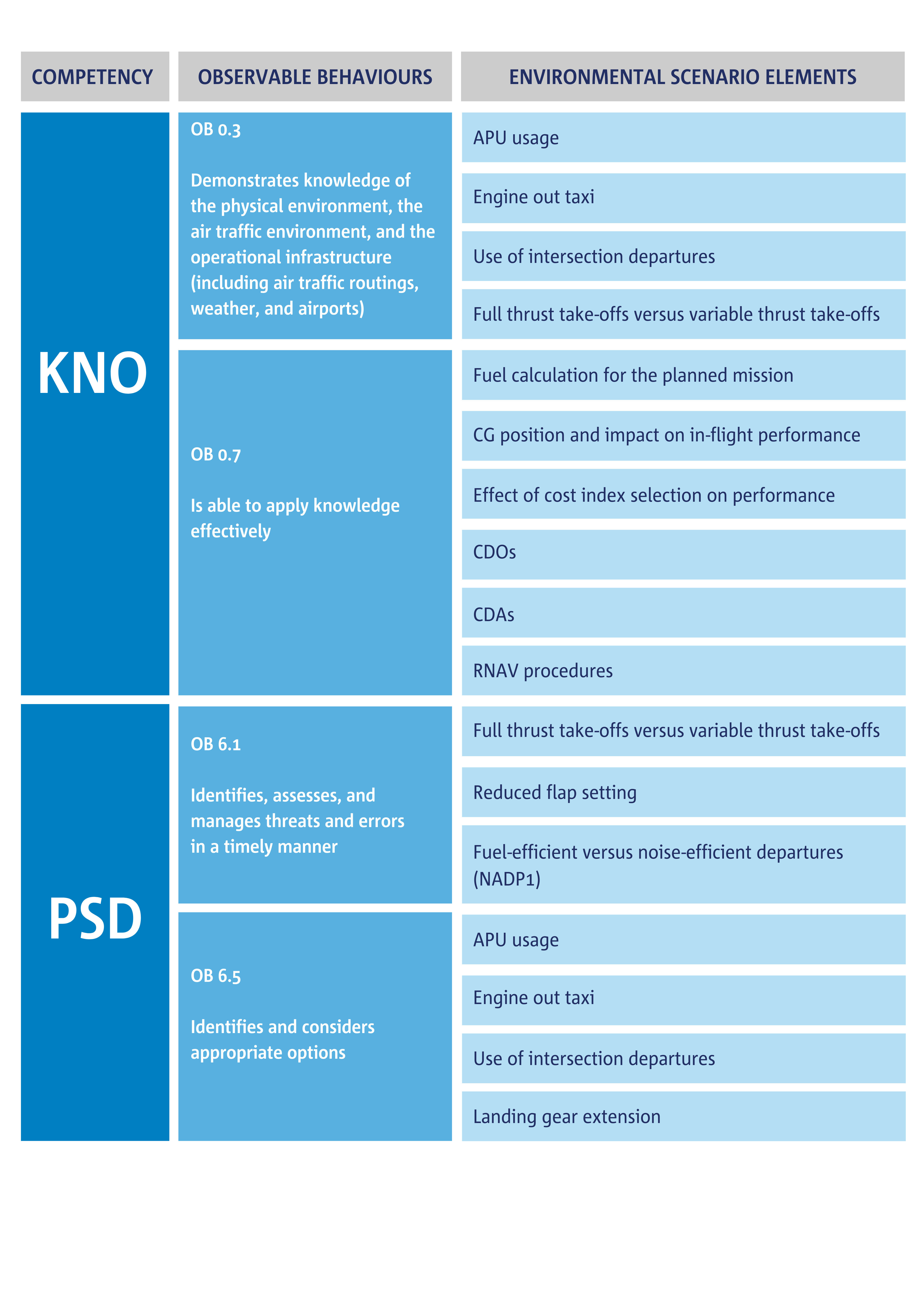Promoting safety culture while bringing environmental considerations into the decision-making process in the early stages of training, is important in helping student pilots build environmental and commercial awareness.
Contributors: Capt. Veronica Zunic (ATPG), Matteo Arnoldi (EASA), Allyson Kukel (Halldale Group), Andy O'Shea (Airline Pilot Club).
Environmental sustainability is becoming an increasingly more important topic for the aviation industry. Fostering an environmentally aware pilot group is not only the morally correct thing to do but also a necessity if we are to see aviation continuing its path of development. Initiatives to reduce the environmental impact of aviation activities include, among others, the use of new engines and sustainable aviation fuel (SAF), ATM optimisation, as well as research into innovative and scalable propulsion systems and aircraft designs. Nevertheless, daily decisions taken by first-line actors, the flight crews, can have a small but significant influence on the impact of air operations on the environment.
Introducing environmental considerations into the operational decision-making process during the early stages of training allows student pilots to build environmental and commercial awareness.
Check out also this videocast with Andy O'Shea from the Airline Pilot Club where he talks to John Franklin from EASA's Safety Promotion Team about the need for sustainable flying and what that looks like from his perspective as former Head of Training for Ryanair.
https://www.youtube.com/watch?v=ekY7AxGBgZo?si=rG8wA78mKz5Kdz0kThe Environmental APS MCC Concept
The environmental APS MCC concept proposes to include environmental considerations into the decision-making process at the APS MCC stage of training with the aim of raising a more mature and environmentally aware next generation of commercial pilots.
The promotion of such considerations should, however, always be applied by having the highest regard for safety culture in the first place. To this aim, threat and error management (TEM) principles should always be emphasised to ensure that risk-generating behaviours are eradicated from an early stage of training.
In this context, the APS MCC gives the opportunity to further develop these principles in a more complex multi-pilot training environment where students are additionally exposed to the practical application of crew resource management (CRM) and competency-based training and assessment (CBTA) principles for the first time.
Environmental considerations applied to standard operating procedures can be explained when theoretical knowledge instruction is provided, as well as during practical FSTD training sessions with scenario-based demonstrations.
In theoretical knowledge instruction, for instance, students can be educated on which chemical substances are released during a flight, their quantity, and the phase of flight in which they are generated.

Familiarisation with environmental considerations for each flight phase and their practical application during FSTD training sessions, when safe flight conditions permit, is a suggested practice.
In the following example, we consider three phases in which a mission can be divided:
- Pre-flight operations
- Ground operations (before and after the flight)
- In-flight operations
For each of them, environmental scenario elements can be identified, and the conditions and potential benefits of environmental procedures during the application of standard operating procedures can be taught.
All of this can be supported by the introduction to the use of flight management system functionalities and further eased, when applicable, by the use of electronic flight planning software.
Environmental Scenario Elements

The competency-based framework of the APS MCC allows a smooth integration of environmental considerations when evaluating how competencies are applied during scenario-based training sessions.
Indeed, it is easily possible to relate the competencies and the associated observable behaviours to the environmental scenario elements, taking into consideration threat and error management principles.
In the example below, emphasis is put on the application of knowledge (KNO) and problem-solving and decision-making (PSD) competencies, which are some of the primarily affected ones.

After each training session, a facilitated de-briefing based on CBTA principles should allow the students to self-analyse and criticise their areas of positive environmental practices and areas of improvement.
What may seem a minor and insignificant action by a singular pilot, has a tremendous impact when multiplied by several hundreds of flights in a day. Environmental impact becomes enormous when faced with the scale of flights and pilot actions. We must continue to develop environmental awareness, enhancing training and bringing it to our schools to educate our next generation of pilots. They will feel empowered when they understand how much impact their actions can have. Increased awareness of our environmental impact will translate into practical effectiveness, and early education will provide pilots entering the flight deck with better environmental awareness, preparing them to make the best use of standard operating procedures to enable environmentally friendly safe operations.
Did you know? A large LCC in Europe recently published the following statistics, which should help cement these environmental principles into our thought process:
CDA - With a continuous descent operation, rather than a stepped descent approach, aircraft can remain at higher altitudes for longer and use less fuel. Last year, this saved 80,000 tonnes of fuel.
EOTI - Close to 90% of our flights perform single-engine taxi operations between the runway and terminal, saving approx. 68,000 tonnes of fuel.
EFB - paperless cockpits cut 15kg of paper manuals per cockpit, per flight, resulting in fuel-burn savings of approx. 600 tonnes p.a.
GPU - The implementation of a GPU policy (where available) helps save up to 9kg of fuel per flight or 25,000 tonnes p.a. during start-up and shutdown.
Dynamic Flight Plans - Pilots receive up-to-date data-driven flight plans which allow for more accurate fuel planning. Digital flight plans offer more efficient connectivity of routes and provide pilots with up-to-date information like weather and air traffic data.
Special thanks to Captain Andy O'Shea and the ATPG's ATO & Sustainability sub-group for developing the white paper discussing the merits of environmental practices from the outset of aviation training.
Definitions
- CDA – Continuous Descent Arrivals
- EOTI – Engine Out Taxi In
- EFB – Electronic Flight Bag
- GPU – Ground Power Unit
Please log in or sign up to comment.